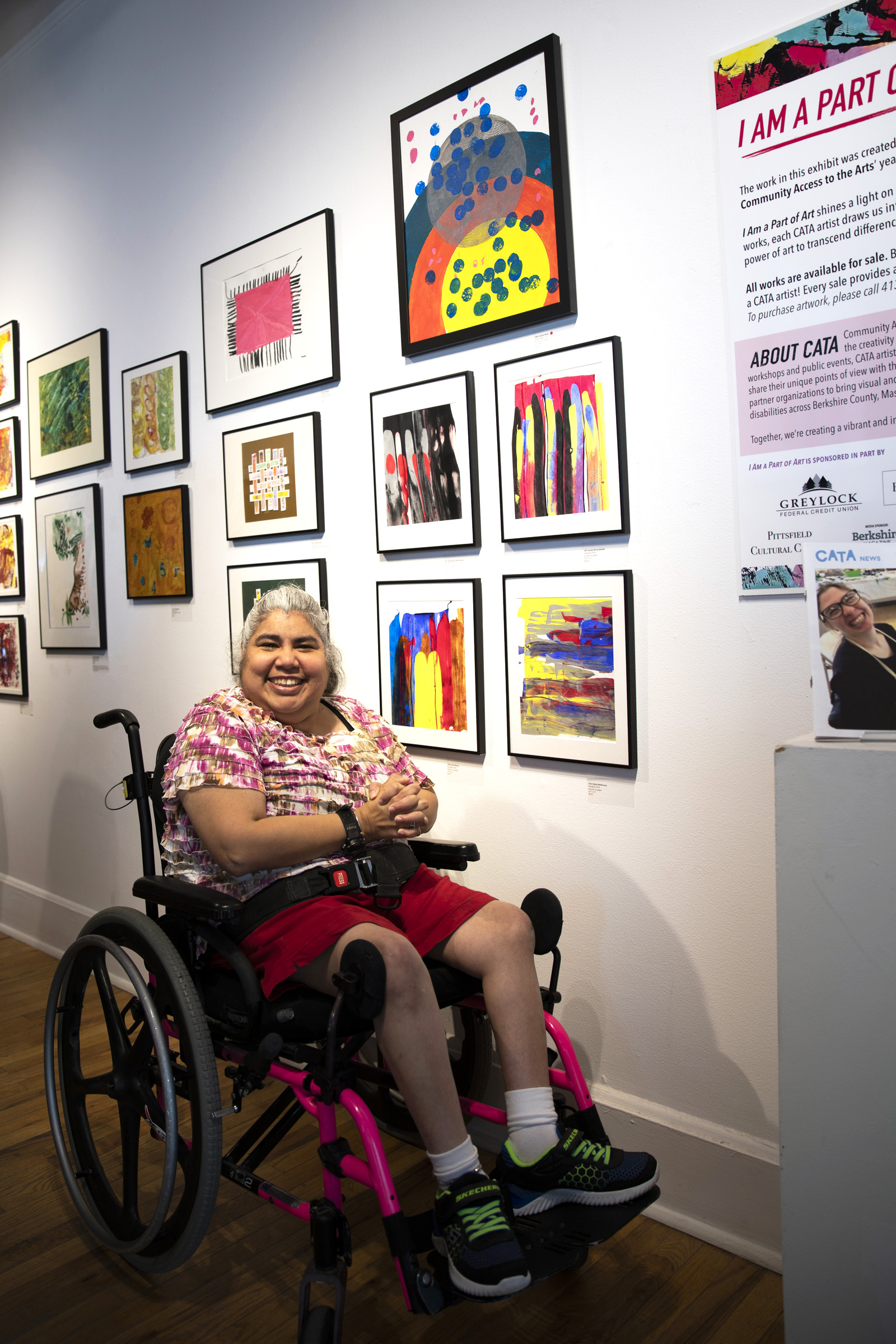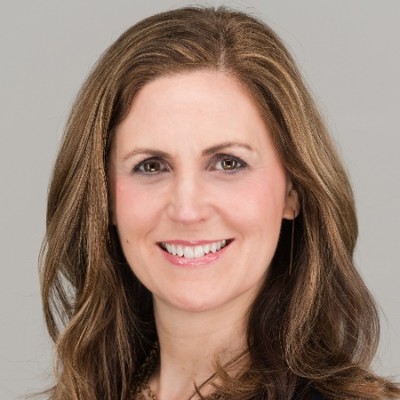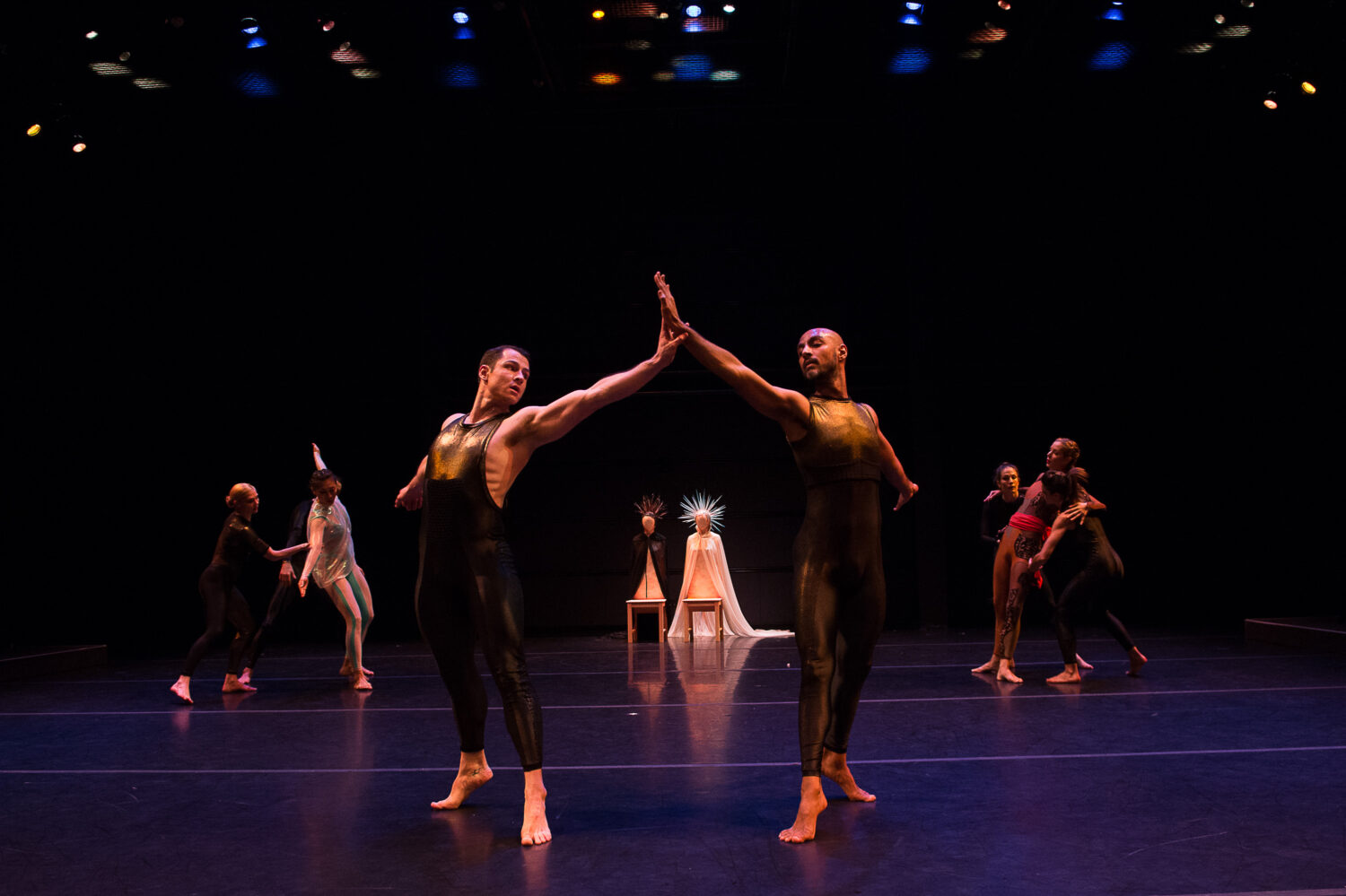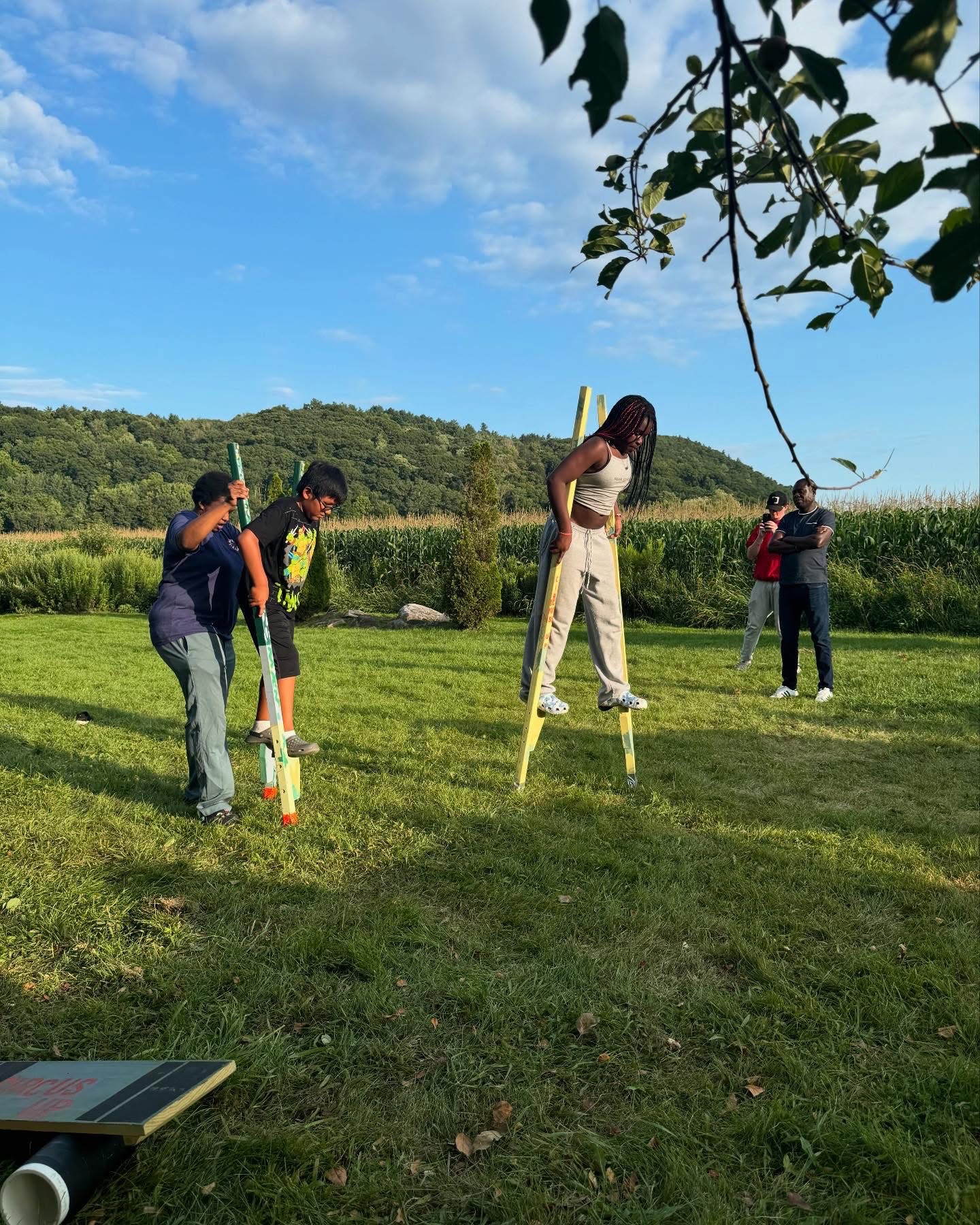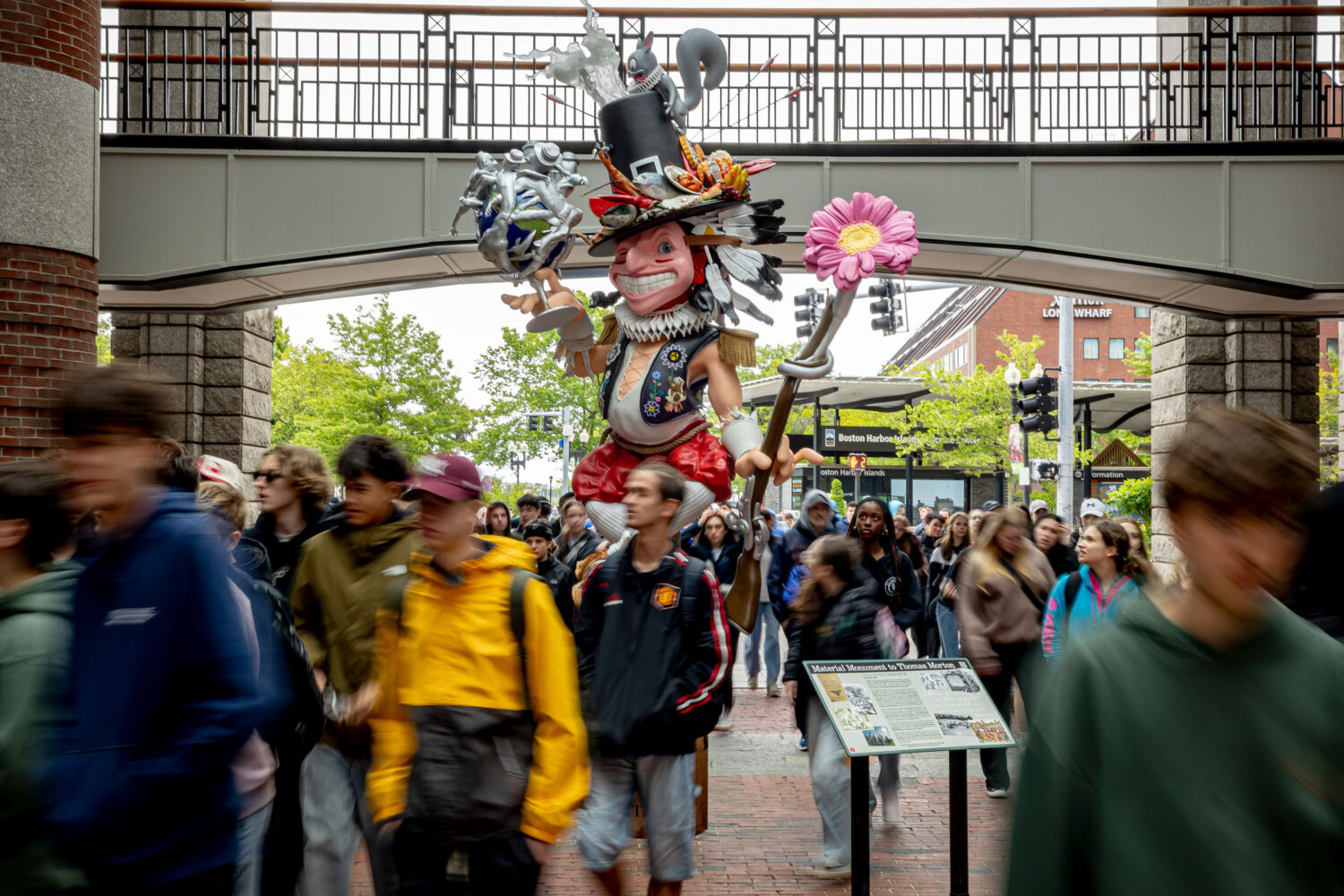An interview with Margaret Keller, executive director, Community Access to the Arts (CATA) written by Pamela Reynolds.
In the first year of the pandemic, arts organizations in Massachusetts were struggling to offer the programming and services they were known for – and many had to shut their doors to their audiences.
But one Berkshire County organization dedicated to nurturing the creativity of people with disabilities was able to defy the odds. Instead of shutting its doors, Community Access to the Arts (CATA), located in Great Barrington, MA, expanded, opening a 6,355 square foot arts center today serving more than 970 artists with disabilities annually. In the last three years, CATA has opened a gleaming new arts center, broadened its art workshops, hired new staff, and transitioned independent contractors into fixed part-time jobs. CATA’s unlikely expansion, happening as the rest of the world contracted, provides a glimpse of how one organization has reinvented itself in challenging times, thriving, surviving, and even flourishing.
“CATA’s growth during the pandemic was incredibly powerful for all of us here,” reflects CATA executive director Margaret Keller. “There was so much that was unknown, and time moved so quickly… In the end, it was the power of our partnerships and the depth and intensity of those partnerships that helped us to see with clarity the need in our community.”
Quick Thinking Early On
In the earliest days of the pandemic, CATA’s full-time staff of eight got blindsided just like everyone else. The non-profit serves people with disabilities in schools, day-habilitation programs, and residences in Berkshire and Columbia counties. Its workshops in disciplines like painting, dance, theater, singing, drumming, and creative writing, have been an exhilarating entrée into unexplored talents, new friendships, and wider vistas for participants since its founding in 1993. Before the pandemic hit, CATA was doing so well that it offered 1,500 workshops led by about 25 independent faculty across different schools, residences, and day programs across 47 different program partners. In February 2020, the organization even celebrated the grand opening of a new art center where many workshops were to take place. The future looked bright.
Then the world changed. Reports of a deadly virus headlined the news every night. And the virus was no longer sweeping across only faraway countries like China and Italy; it had arrived in the Berkshires. Within a week, CATA watched its artists, their caregivers, and staff working at partnering schools and residential facilities fall ill and even get hospitalized.
“It got dramatic quickly,” says Keller. “We were talking to our partners, and they were dealing with a crisis of unimaginable proportions.”
The problem was particularly grave because of the population served by CATA. CATA artists include those with developmental and intellectual disabilities, Down syndrome, cerebral palsy, traumatic brain injuries, and Prader-Willi syndrome, among other conditions, putting them at a much higher risk of contracting a severe case of COVID. In addition, many live in group homes in relatively close quarters, and the virus was pummeling those kinds of facilities. And at the time, there was no federal or state money to help out, either.
The answer to that question was counterintuitive: Go big and bold. It was something that many other arts organizations couldn’t afford to do, and if they could, might have avoided through sheer prudence. But instead of pulling back, CATA dipped into its reserves and ramped up course offerings. While the new art center could no longer host in-person classes it could be reshaped to serve as a socially distant Zoom base for faculty who could take advantage of the center’s strong internet connection to lead online courses. Amid all the tumult, Keller asked herself whether dancing and drumming workshops were what the community needed at a time of crisis. What she heard from schools and agencies confirmed her decision: CATA’s acting, juggling, and dancing workshops were exactly what people needed at a time of crushing anxiety, isolation, and loss.

Photo of CATA artists participating in a Zoom-based yoga class in January 2021
“It was incredibly powerful to see how, through the arts, our CATA artists found connection,” says Keller. “They found engagement. They were able to express themselves creatively. They were still able to work on their own personal growth and personal development. And I think that ability to express themselves creatively was profoundly important at that moment in time.”
Planning for a Rainy Day
CATA, it turned out, was oddly positioned to leverage the crisis for growth. One reason was that it was prepared. Since 2018, CATA staff has participated in ongoing training with the Barr-Klarman Massachusetts Arts Initiative (BKMAI) designed to help mid-sized arts nonprofits build financial health, adaptability, and organizational equity. Keller says that what she learned in the program became instrumental in helping the organization increase its capitalization and set aside money for a rainy day. During the BKMAI initiative, CATA more than doubled its organizational budget to $2 million.
That was lucky, says Keller, because COVID came and it wasn’t just raining, it was pouring.
“If we had not done that strategic work, I don’t know if we would have been able to be bold in the moment that boldness was called for,” says Keller. “We had really thought through what our reserves were there for. We recognized that this was the time to be prepared to spend it in service of our community. And that made a huge difference.”
A Lifeline on the Ground
On the ground, dipping into savings translated into transformed days for people like Scott Thomas, a resident of Leander House, a Great Barrington non-profit housing adults with intellectual disabilities.

Instead of spending weeks and months on lockdown with zero stimulation and social interaction, Thomas was able to attend workshops in Shakespeare, writing, music, and painting.
Thomas says he looked forward to each Zoom session and “picking up new techniques.”
Jennie Reins, director of Leander House, says the CATA programming came at a critical moment for Leander House’s six adult residents.“It was a godsend for us,” she says. “People were getting stir crazy. It was mid-winter, and they (the residents) weren’t seeing their friends. So they were able to connect with their friends, be involved with their classes again, at least, virtually.”
At a time when students globally found themselves losing social and academic skills, sometimes falling into depression as a result of isolation, having access to art workshops was a way to stay motivated and involved for CATA artists of all ages.
Deepening, Not Just Expanding
For CATA, the pandemic served as an unexpected stress test. The organization could see both its strengths and where there was room for improvement. Its strengths included committed donors and rock-solid community ties. Schools and facilities rely on CATA to provide services that nobody else is bringing to people in the area with disabilities. Growing steadily during the pandemic, CATA today runs 2,200 workshops in 22 school programs and 30-day-habilitation programs and residences. It has added five full-time staff members.
But despite its growth, like many arts organizations, CATA still grapples with issues around racial diversity, especially in a county that is more than 90% white. Acknowledging this issue, CATA has looked for ways to reach more communities of color. One way has been through boosting its partnership in the Pittsfield Public Schools, the most racially and ethnically diverse school district in Berkshire County. CATA has expanded Pittsfield school offerings to include dance, juggling, acting, drumming, songwriting, and yoga. It’s also expanded in the district to 11 schools and 16 classrooms with more than 600 art workshops annually.
The organization also took an internal assessment on equity issues, encouraged by what it had learned through its Barr-Klarman training. It turned to Multicultural BRIDGE, a Berkshire grassroots organization to expand equity training for staff, faculty, and board members.“It sparked for us a whole conversation,” says Keller. “Who are we not reaching and why?”
Among the questions it has asked itself include what kind of factors might prevent a person of color from being diagnosed with a developmental disability in the first place. A formal diagnosis is often required to access enrichment programs and services. As part of its internal self-evaluation, CATA has also sat down with social service organizations, community groups, and churches to figure out how to better reach communities of color.
“We just sat with folks to ask them; do you connect with people with developmental disabilities? Have you experienced or has anyone in your community experienced difficulty in obtaining a diagnosis? What do you know about CATA? What do you think about CATA?” says Keller.
Lessons Learned for the Long Haul
The past three years have given the organization ample ideas as to what’s helped them to thrive, even in the face of ongoing fundraising challenges that most non-profit arts groups face. Cultivating a sound financial base is important, but so are soft skills, including building a committed staff.
“There are a lot of lessons about being embedded in the community, about being bold when you need to be bold, about being nimble and flexible and listening to your community about what they need,” says Keller.
The pandemic underscored the importance of building relationships and, in Keller’s words, staying “supple.”
“I think we have a much more profound sense of gratitude for those relationships because of COVID as well,” she says. “Having strong and authentic relationships where people level with you and share with you their challenges, hopes, and dreams, that is how you create and co-create effective programs that serve the community.”
